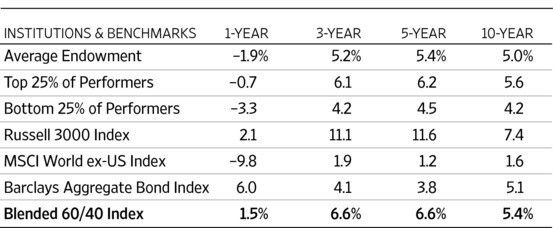It’s never been easier for investors to add exposure to alternative investments into their portfolios.
Liquid alternatives offering exposure to hedge-fund strategies and nontraditional asset classes through a mutual fund or ETF wrapper are becoming increasingly popular among investors looking to increase diversification at a time when equity valuations are high and fixed-income yields are low.
Unfortunately, there is no guarantee that alternatives will improve returns or shield your portfolio in a down market.
Should Alternatives Have a Place in Your Portfolio?
Anytime you add an exposure to your portfolio, you risk including something that doesn’t truly offer a benefit. On the other hand, excluding a position from your portfolio means you risk missing out on something that would have improved your investment experience. This is known as the tradeoff between Type I and Type II error.
In your portfolio, you can minimize Type I error by owning a couple broad market index funds and never seeking further enhancements to your portfolio. Minimizing Type II error, on the other hand, means implementing every new strategy that has a chance of improving absolute or risk-adjusted returns.
The challenge is that minimizing one error leads to a higher chance of realizing the other error.
The fascinating thing about evidence-based investing is that people can look at the same data and come to different conclusions depending on their preference for minimizing Type I or Type II error. Investors should strive to strike a good balance, but also recognize that a great deal of investment success comes from avoiding mistakes.
All too often I see people make investments decisions that lean heavily on backtests or models, yet fail to acknowledge the uncertainty regarding the net benefit of including an exposure going forward.
Plus, each additional strategy included in your portfolio has a diminishing marginal benefit and fees frequently offset the benefits of otherwise attractive diversifiers. This only increases the uncertainty regarding the net benefit from inclusion of alternative strategies.
These are just a few reasons investors should be more concerned with implementing a bad idea than missing out on a good one.
Traditional Portfolios Beat the Pros
Data gathered from U.S. colleges and universities through an annual study by the National Association of College and University Business Officers (NACUBO) also suggests that alternatives might not be as great in practice as they are in theory.
The most recent NACUBO-Commonfund Study of Endowments (NCSE) reviews asset allocations and performance for 805 U.S. endowments that manage $515.1 billion of assets. The average endowment was $649.9 million with a 53% allocation to alternative strategies.
These institutions are bursting with talented staff and resources to successfully implement a major allocation to alternative strategies. Even so, returns fall short of a simple blended index of stocks and bonds.
The table below comes from an article I wrote for The Wall Street Journal last month. It outlines average annual returns from the study for periods ending June 30, 2016.

The Blended 60/40 Index is comprised of 42% Russell 3000 Index, 18% MSCI World ex-US Index, and 40% Barclays Aggregate Bond Index (a portfolio that could be purchased for less than 0.10%). These weights are based off of the benchmark we use at Plancorp.
If the best and brightest investment teams fail to improve outcomes, then you can reasonably expect investors using liquid alternatives wouldn’t fare much better. The NACUBO study ignores risk-adjusted returns and only spans a decade, but it reinforces the idea that you should be more concerned with avoiding bad ideas than missing out on good ones.
If the data isn’t convincing enough, then take it from Yale’s Chief Investment Officer David Swensen, who popularized the heavy use of alternative strategies within a Modern Portfolio Theory framework. In his book Unconventional Success, Swensen acknowledges that the vast majority of individuals and institutions would be better off in a low-cost portfolio of stocks and bonds:
“Talking heads prattle about the attractions of alternative asset classes. Wall Street pushes vehicles that allow investors to access inefficient markets. Investors require unusual self-confidence to ignore the widely hyped non-core investments and to embrace the quietly effective core investments.”
Complex Solutions Can Lead to Bad Behavior
Another consideration for alternative strategies is that their complexity leaves investors susceptible to making emotional decisions when they don’t understand their investments.
This tendency is magnified by the lack of good benchmarks for the dozens of alternative investment strategies, which causes most investors to compare their alternative exposures to traditional equity and fixed income benchmarks.
That’s the wrong comparison, but investors who don’t have a sound understanding of each of the underlying strategies of their alternatives exposure are usually tempted to dump that exposure and move on to something with better performance.
Considerations for Alternative Investments
If you are considering alternative exposures, you need clearly defined goals and expectations for your allocation of alternative investments. Ask questions such as:
- How do my various alternative investment strategies work?
- How do my alternative investments interact with other parts of the portfolio?
- How will this improve the portfolio’s ability to meet its investment objective?
- How do we determine if the strategy is working?
- Do I expect my portfolio to lose less in the next recession?
- What will I do if this exposure causes me to trail my portfolio benchmark for several years?
Alternative strategies aren’t inherently bad, but they are likely to lead to bad outcomes for investors without a solid understanding of the underlying strategies and realistic expectations for the range of possible outcomes.


-4.png?width=266&name=Copy%20of%20blog%20featured%20image%20(1)-4.png)






